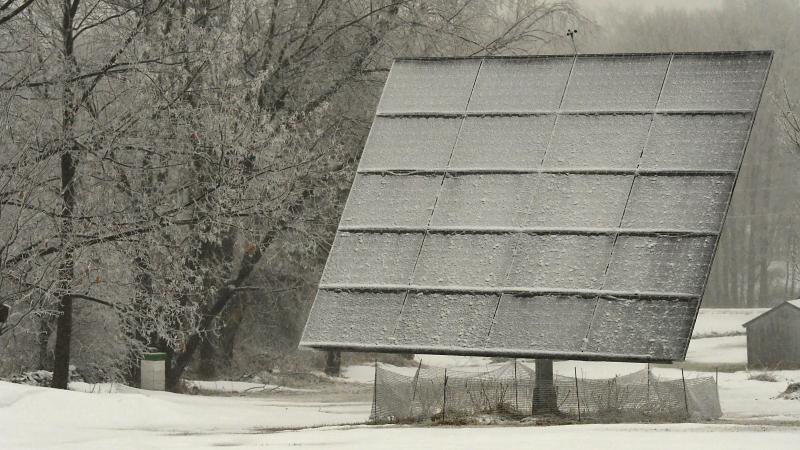A renaissance in nuclear energy is creating demand for uranium fuels, but where will it come from?
Simple Supply and Demand: As more nuclear power plants go online, the increased appetite for uranium means higher prices. At the start of 2020, uranium spot prices were under $30 per pound, and today they’re pushing up towards $90 per pound.
Anticipating a heightened future demand for nuclear fuels, U.S. mining company Energy Fuels Inc. announced it's going to increase uranium production at three of its permitted mines in Arizona and Utah. Two more mines in Wyoming and Colorado may also see more activity within a year, according to a company statement.
“Energy Fuels has made the required investments over the past several years to prepare for today's uranium markets, and we are uniquely positioned to successfully resume U.S. uranium production in 2024. This is evidenced by our production of roughly two-thirds of all uranium produced in the U.S. over the past five years,” Mark Chalmers, president and CEO of Energy Fuels said. The company also says Energy Fuels has been the largest producer of uranium in the U.S. for the past several years, and "we are commercially producing the most advanced rare earth materials in the U.S. while moving further down the rare earth supply chain."
Growing support
As the quest to remove carbon dioxide emissions from energy production runs up against the practical and technical limitations of intermittent wind and solar, some nations are reconsidering a decades-long stance against nuclear energy.
Climate activists in Europe launched a Dear Greenpeace campaign in September, asking the organization to drop its “old fashioned” opposition to nuclear energy. The Swedish parliament in November voted to allow more nuclear reactors to be built.
Here in the U.S., the Biden administration provided funding for nuclear research through the Inflation Reduction Act, and officials in California approved a plan earlier this month to keep the state’s last remaining nuclear power plant, Diablo Canyon, open for six more years. The decision supported “the reliability of the California electricity grid as we move forward in our energy transition,” a state official told The San Diego Union-Tribune.
Ironically, as long as ten years ago, Stewart Brand, man who helped father the environmental movement in the U.S., published the Whole Earth Catalog, and helped invent Earth Day has been a strong proponent of nuclear power, telling National Public Radio that "I used to be, you know, pretty much a knee-jerk environmentalist on this particular subject. And then because of climate change I re-investigated the matter and discovered that I'd been misled in many of the details on how nuclear works. And I finally got to the point where I'm so pro-nuclear now that I would I would be in favor of it even if climate change and greenhouse gases were not an issue."
Should the resurgence of nuclear energy continue without the opposition that has long held it back, reactors coming online across the world will need fuel, and the market may be recognizing this. At the start of 2020, uranium spot prices were under $30 per pound, and today they’re pushing up towards $90 per pound.
Energy Fuels, which is the only company in the U.S. with a license to operate conventional uranium processing facilities, is hoping to take advantage of these market conditions. The company’s announcement said it would ramp up production at the Arizona and Utah mines to produce 1.1 to 1.4 million pounds per year by the end of 2024.
The ore will be stockpiled at the company’s White Mesa Mill in Utah, where it can be processed in 2025, if market conditions favor it. The mines in Colorado and Wyoming would then add another 2 million pounds to this supply if the demand is there.
When it comes to raw ore, Kazakhstan in Central Asia produced over 43% of the world’s uranium in 2022, according to the World Nuclear Association (WNA). Canada, the world’s second highest producer, is responsible for just under 15% of the global output. Total U.S. production in 2022 accounted for 0.002%.
Processing that ore into fuel that can be used in a reactor is another market. Many of the advanced reactors that are being developed today run on high-assay low-enriched uranium (HALEU), but Russia is the only country that provides a commercial source of the material.
After the Russian invasion of Ukraine, the world has been seeking non-Russian sources of uranium fuels.
The U.S. House of Representatives passed a bill earlier this month that would ban Russian imports of enriched uranium products, which make up 20% of U.S. reactor fuel needs.
Most uranium is shipped as a concentrate known as "yellowcake" because it’s more economical, according to the International Atomic Energy Agency. Global production of yellowcake plunged from 69,968 metric tons in 2013 to 58,201 metric tons in 2022, The Telegraph reports, which is 10,000 metric tons less than current reactor requirements. This doesn’t include demand from future reactors that are expected to come online.
Canadian mining
David Hammond, principal mineral economist with the Hammond International Group, was exploring for uranium resources in northern Saskatchewan in 1969. Hammond told Just The News that the 1.4 million pounds of uranium per year that Energy Fuels is planning in 2024 is compared to U.S. production in the 1960s, which was around 40 million pounds. His company currently specializes in manufacturing oxides and other speciality chemicals used in battery manufacture.
Energy Fuels' White Mesa Mill in Utah "is a pimple on the ass of the global uranium business,” Hammond said. Kazakhstan, he continued, could develop more independence from Russia, and in his view the best bet for the U.S. to find non-Russian sources of uranium is Canada. Canada’s mining industry benefits from stronger provincial oversight, which are much more oriented toward resource development, and a lack of local opposition to mining operations in highly remote area, he said. “They have oppositional groups up there, but they tend to be based in Toronto and Vancouver,” Hammond said.
Any new uranium mining operations in the United States, on the other hand, Hammond said, are going to face fierce protests from environmental groups. They will take years to permit, and all the uncertainty of success won’t easily attract investors. Canadian operations are much better positioned for investment, he said.
“Canadian investors have always been more inclined to invest in the mining industry than any other country. They just kind of grow up with it. Mining has always been an integral part of the Canadian economy,” Hammond said, adding that with many nations warming up to nuclear’s potential, including China, the uranium mining industry is likely to come back, even if not in the U.S.
“We need to stay real close friends with Canada,” Hammond said.
The Facts Inside Our Reporter's Notebook
Links
- according to a company statement
- limitations of intermittent wind and solar
- Dear Greenpeace campaign in September
- voted to allow more nuclear reactors to be built
- provided funding for nuclear research through the Inflation Reduction Act
- state official told The San Diego Union-Tribune
- theyâre pushing up towards $90 per pound
- according to the World Nuclear Association
- passed a bill earlier this month
- according to the International Atomic Energy Agency
- The Telegraph reports















